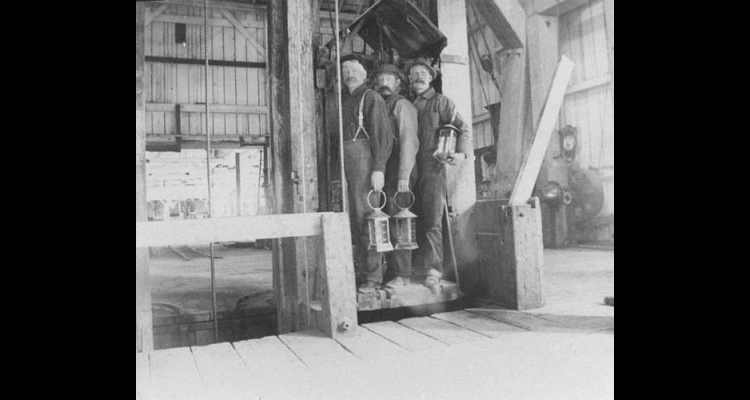Irish Immigrants: Nineteenth-Century
Popular imagination links the Irish with the building of America's transcontinental railroad. Irish track layers dominated the westward push in answer to their largely Chinese counterparts heading east from California. Nevertheless, most Irish in early Nevada were miners with no railroad experience. The Irish contributed to Nevada's earliest mining period.
On June 8, 1859, Irish-born Patrick McLaughlin and Peter O'Riley discovered the north end of the Comstock Lode, a huge gold and silver ore body. The strike resulted in the founding of Virginia City. The 1860 census documents an even scattering of Irish immigrants in the western Great Basin, representing about ten percent of the population. Some served as soldiers at Fort Churchill. Others found diverse occupations throughout the region. In Virginia City and Gold Hill, the majority of about 300 Irish were miners, again representing roughly ten percent of the community. Like other groups, Irish women were rare at first.
Over the next decade, thousands of Irish immigrants moved to Nevada. Forty-two percent settled in the Comstock Mining District. In the 1880 federal census, Storey County claimed forty-eight percent of the growing number of Irish in the state. Unlike other countries, nineteenth-century Ireland sent almost equal numbers of men and women to North America. Irish gender on the Comstock subsequently became nearly balanced, making them an anomaly in a mining district where among other groups, men continued to outnumber women dramatically. Not surprisingly, Irish-American children dominated Storey County's schools, and counting their numbers, Virginia City was a third Irish by 1880.
Many Comstock Irish came from County Cork, location of the Castlebere Peninsula copper ores and the only nineteenth-century mines in Ireland. Hard rock mining in the American West proved an attractive opportunity for Irish experienced labor. Cork miners arriving on the Comstock found high wages and a chance to command local politics. Western Irish immigrants were also more likely than those from eastern Ireland to speak Gaelic, and indeed, nineteenth-century documents reveal that the language existed in Virginia City.
In addition, Cork miners brought the baggage of long-standing antagonism against the Cornish. English owners of Cork mines often employed Cornish to supervise Irish workers. Centuries-old Protestant-Catholic animosity exaggerated hostilities between management and labor. On the Comstock, unionized Irish arriving by the hundreds undercut the Cornish. Simmering enmity occasionally escalated into violence.
Comstock Irish formed the bedrock of the Nevada National Guard. Many participants hoped to fight for Irish independence, but frequent training and parades also enhanced ethnic solidarity and provided a military accent to the domination of local politics. One of Irish-America's greatest stories featured John W. Mackay, James G. Fair, James C. Flood, and William S. O'Brien, immigrants who rose to power in the late 1860s and early 1870s. They earned millions while managing the best Comstock mines. Fair became a U. S. Senator, and Mackay emerged as one of the world's richest men. When mining declined in the 1880s, people of all ethnicities left Nevada, but the Irish showed tenacity. Some of their families remain today.
Article Locations
Related Articles
None at this time.
Further Reading
None at this time.


